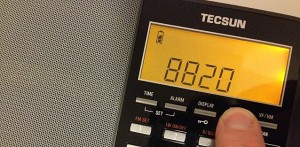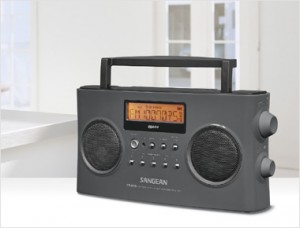 One of the most popular posts on the SWLing Post each year is the annual Holiday Radio Gift Guide. I started this annual post in 2010 when I realized that it would be easier than answering an in-box full of individual emails from people seeking the perfect shortwave radio for their friend or loved one.
One of the most popular posts on the SWLing Post each year is the annual Holiday Radio Gift Guide. I started this annual post in 2010 when I realized that it would be easier than answering an in-box full of individual emails from people seeking the perfect shortwave radio for their friend or loved one.
In the following, you’ll find a handful of select radios I recommend for the 2013-2014 gift-giving season. I’ve arranged this selection by price, starting with the most affordable.
For the benefit of those with less radio experience, this quick guide is basic, non-technical, and to the point. For more comprehensive reviews, please consult our Radio Reviews page.
Updated for the 2013-14 holiday season on 08 December 2013.
Simple, affordable and portable
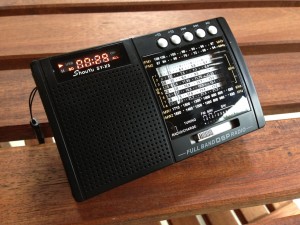
The Shouyu SY-X5 mechanically-tuned, DSP portable radio. (Click to enlarge)
ShouYu SY-X5 ($29)
You can’t buy a lot for $30 US these days, but I’m here to tell you that you can buy a unique, portable AM/FM/shortwave radio with a built-in MP3 player called the ShouYu SY-X5. I made a full review of the SY-X5 earlier this year; in short, it surprised me. While this little radio’s receiver can’t compare to the others on this page performance-wise, it is still very respectable. The MP3 capability is worth the price. You can load a microSD card full of your favorite music (or shortwave radio recordings) for days of listening!
Indeed, the audio from the built-in speaker is superb for a radio this size. Th SY-X5 can be powered from multiple sources (a rechargeable built-in battery pack, AA batteries, or via USB power cable).
Since the ShouYu SY-X5 is only available from eBay sellers in Hong Kong, you need to allow at least two or three weeks shipment time from the seller. You might ask if they offer an expedited option.
Click here to search eBay for the ShouYu SY-X5.
Other considerations include the Degen DE32 (review here) or Degen DE321
(review here) or Degen DE321 (review here). Note that the Degen DE321 lacks an MP3 player.
(review here). Note that the Degen DE321 lacks an MP3 player.
Self-Powered Shortwave Goodness

The Tecsun Green 88
Tecsun Green 88
In each issue of the holiday guide, I like to feature at least one self-powered radio. Why? Because if you’re ever been left in the dark due to a natural disaster or extended power outage, these radios become invaluable.
The Tecsun Green 88 is not only self-powered, but quite a capable little analog shortwave radio. It has a nested fine tuning control on the tuning knob, an easy to read display and will give you about 40 minutes of listening time (at moderate volume levels) from two minutes of cranking. The LED lamp on the front makes an excellent flashlight and reading lamp. Again, to my knowledge, this radio is only available from sellers in Hong Kong on eBay, so allow extra shipping time.
Click here to search eBay for the Tecsun Green 88.
Some other self-powered radio options you might consider are the Eton Rover and the Eton FRX2, though note that they both have NOAA weather radio channels instead of shortwave. A very useful feature, though, for weathering winter storms.
Portable & powerful shortwave receivers
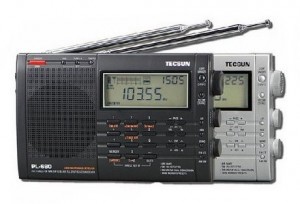
The Tecsun PL-660
The Tecsun PL-660 ($100-110 US)
With the introduction of the new Tecsun PL-880 this year, retailers have dropped the price of the PL-660; you can now find them between $100-110 US.
The PL-660 is an all-around excellent receiver with great sensitivity, selectivity and all of the features to please a casual listener or the experienced DXer. For a full-featured radio, the operation is so simple an owner’s manual is barely needed. The PL-660 covers the entire shortwave radio spectrum, LW, AM (medium wave), FM and even has an AIR band (to monitor aircraft communications).
Purchase the Tecsun PL-660 from:
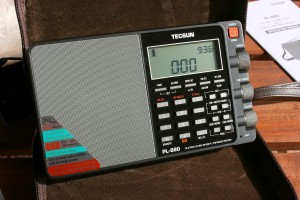
The new Tecsun PL-880
The Tecsun PL-880 ($150-170 US)
[Update: Unfortunately, after reviewing the PL-880 favorably, I have discovered that many units–especially those purchased through Amazon.com–have an older firmware version and lack some functionality I would consider very important. I now suggest buyers wait until Tecsun has corrected this–sometime well after the holiday season.]
At time of posting, the Tecsun PL-880 has only been on the market for about a week. It is the newest flagship portable radio from Tecsun. I have been reviewing this radio for several days and find it to be an excellent choice, if your budget allows. (Indeed, reviewing this radio had lead to a late delivery of the Annual Gift Guide!)
If you would like to see and hear the PL-880 in action, simply click on this link and explore the numerous posts and comments.
In short: it’s a great radio with superb audio from the built-in speaker. It’s also designed to make the amateur radio operator happy as it has an array of filter selections for the ham bands. In my experience, the selectivity and sensitivity are on par with the PL-660 (mentioned above). Click here to read a full review of the PL-880.
The PL-880 is only available from a few retailers so far–most of whom are on eBay. Again, I purchase all Tecsun products from Anon-Co –I’m sure there are other qualified sellers on eBay, but Anon-Co
–I’m sure there are other qualified sellers on eBay, but Anon-Co provides excellent customer service. My PL-880 was shipped by Anon-Co
provides excellent customer service. My PL-880 was shipped by Anon-Co and received in 3 days!:
and received in 3 days!:
Tabletop Performance

The CommRadio CR-1 is sure to please even the most discriminating radio listener in your life.
CommRadio CR-1 ($600 US)
The CommRadio CR-1 was introduced early this year and began shipping in the Spring. While you can read my full review of the CR-1 by clicking here, in a nutshell, it’s a brilliant little receiver! It wooed me from the moment I first saw it.
The CR-1 is made in Colorado, USA by CommRadio, a company well-versed in radio avionics. It’s thoughtfully engineered, relatively small (über portable), and meets all of my performance needs. It’s also a fun little radio and very easy to operate. The CR-1 can be updated by the user via a USB cable and free PC software. Many of the updates include minor tweaks requested by users and even new features.
Only one catch: CommRadio has sold out of their stock for the holiday season. They’re offering a $25 coupon (see below) if you order and don’t mind an early January delivery time. However, call Universal Radio as they had radios in stock at time of this posting.
Purchase the CommRadio CR-1 from:
- CommRadio (until December 31, 2013 use the coupon code CR12014 at check out to receive $25 off the price) or
- Universal Radio who may have them in stock to ship
Other tabletop radios to consider are the Alinco DX-R8 and the Icom R-75.
Looking for an accessory?
 In addition to the radios above, there are many antennas, accessories, books and used gear that you might consider. I would encourage you to contact Universal Radio and speak with one of their staff to seek suggestions. I mention Universal Radio frequently, because they are one of the only remaining true shortwave radio retailers in the US. If you live in Canada, you might also consider Durham Radio, in the UK, Waters & Stanton. (Readers: if you have suggestions of radio retailers in your country, please comment on this post.)
In addition to the radios above, there are many antennas, accessories, books and used gear that you might consider. I would encourage you to contact Universal Radio and speak with one of their staff to seek suggestions. I mention Universal Radio frequently, because they are one of the only remaining true shortwave radio retailers in the US. If you live in Canada, you might also consider Durham Radio, in the UK, Waters & Stanton. (Readers: if you have suggestions of radio retailers in your country, please comment on this post.)
Want more gift options? Try our 2012, 2011 or 2010 gift guides, take a look through our shortwave radio reviews guide and/or our simplified reviews page.
Happy Holidays!
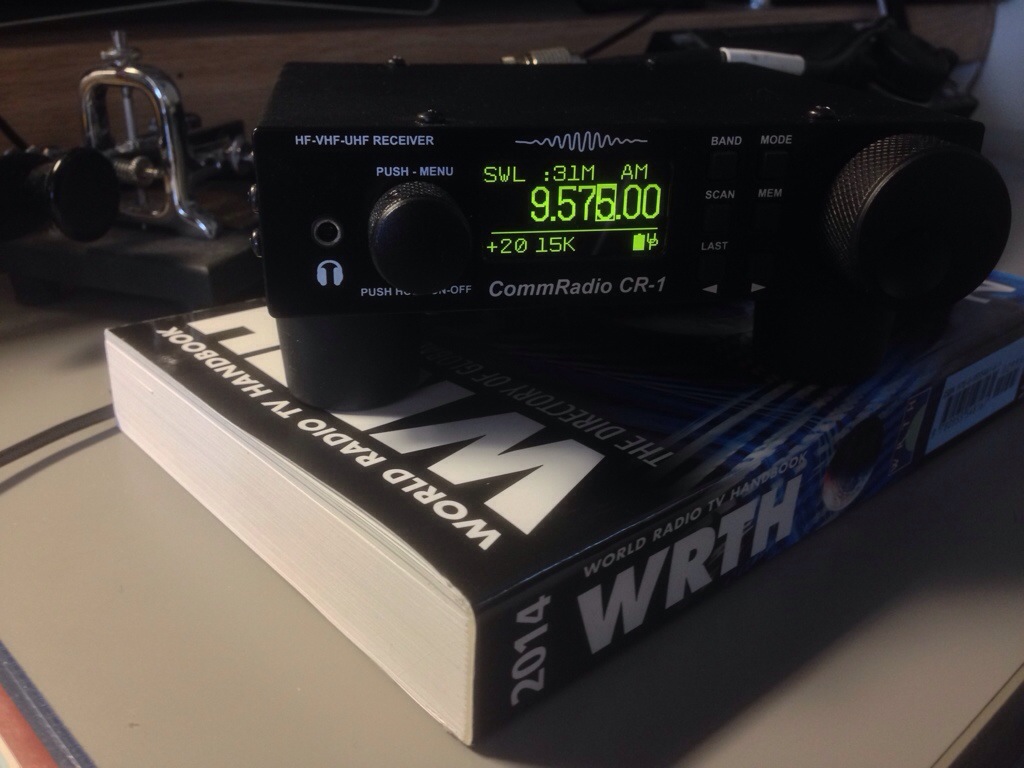

 I’m very pleased to have just received the 6th edition of John Figliozzi’s
I’m very pleased to have just received the 6th edition of John Figliozzi’s 